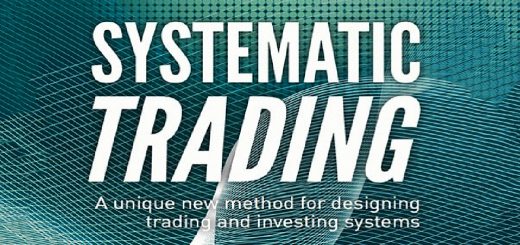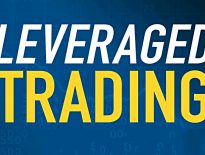Leveraged Trading 6 – Position Adjustment

Today’s post is our sixth visit to a new book by Rob Carver, one of our favourite financial authors. The book is called Leveraged Trading.
Position adjustment
In Chapter Ten, Rob looks at position adjustment.
- Up to now, we’ve kept position sizes constant, regardless of how confident we are in our trade, or how the risk in the market changes.
Non-binary trading involves opening a larger than normal position when the signal is strong, and a smaller position when the signal is weak.
- It only makes sense with continuous trading (no stop losses).
Signal strength makes sense for both momentum/breakout signals and for carry.
- We can also now have a signal of insufficient confidence in either direction and hence have no open position in an instrument.
Non-binary trading is a lot like the pyramiding technique used by some traders – but it’s better because it is systematic rather than subjective.
- You also don’t need a separate stop loss for each additional trade that you make.
Combining dropping the stop-loss with moving to binary trading improves the SR of the RSS from 0.24 to 0.34.
Forecasts
Rob defines a forecast as a scaled measure of how confident each trading rule is.
- He uses +10 as the score for a normal-sized long position.
- So +20 would mean a double-sized position and +5 would mean a half-sized position.
Negative numbers mean a short position is taken.
Rob ignores numbers above +20 and -20 (ie. he caps the range at +20 and floors it at -20).
- Larger values would mean you were taking on too much risk, with meaningful probabilities of significant losses.
Rob also feels that most trading rules don’t work well at extremes.
- Very strong trend signals may precede a reversal, and significant carry in FX usually precedes a currency crisis.
Position scaling
Rob’s process for calculating the forecast has four steps:
- Get the raw forecast (in price units) from the trading rule.
- Divide by the instrument risk (volatility – in price units) to get the risk-adjusted forecast
- Rescale so that the average value is 10 (for a long forecast)
- Cap/floor if outside the +20/-20 range
The scaling factor for MAC 16,64 is 57.12, for MAC 32,128 is 38,24 and for MAC 64,256 is 25.28.
- Scaling for Breakout 40 days is 32.7, for B-80 is 33.5 and for B-160 is also 33.5.
- The scaling factor for Carry is 30.
When using multiple trading rules, you can weight the forecasts from each rule according to your preferences.
- You can also scale up the forecast slightly to incorporate the diversification benefit from using multiple rules.
- Rob covers this in his earlier book but leaves it out of this one.
Since we can now hold “half positions” (anything less than one, for a forecast of less than 10), if the trading size is scaled back due to early losses, a half-position won’t need to be converted down to zero.
- You could start with more capital to avoid this, but that extra capital would be better employed in trading more instruments.
Position size is proportional to instrument risk (we divide the risk target by the instrument risk).
- So when things get volatile, we need to scale back our positions.
Rob only does this when the position is off by more than 10% of the average exposure (the exposure for an instrument forecast of 10).
- He calls this the deviation percentage.
What next?
Chapter Eleven is the last chapter in the book (( Excluding the Appendices )) and looks at what comes next for someone who is confidently trading the system thus far described.
The obvious next step is to add more trading rules.
- This means either back-testing or finding another source of trading rules.
Alternatively, you could move away from fully systematic trading towards semi-automatic or discretionary trading.
- Here the trader decides when to open a trade and the system sizes it and decides when to close it (via a stop loss).
I’m much more interested in the former than the latter, and in particular in finding new sources of pre-tested rules.
- Rob doesn’t mention any in this chapter.
He presents a lot of material on semi-automatic trading, but I will skip all that.
Conclusions
And that’s it – we’ve made it through the book.
- I’ll be back in a week or two with a summary post.
After that, we’ll move on to Systematic Trading.
And when I can scrape together enough capital outside of tax shelters, I’ll have a go at implementing the system for myself.
- The book has been a great success as an easier to digest version of Rob’s first book, but the proof of the pudding will be in the trading.
Until next time.















